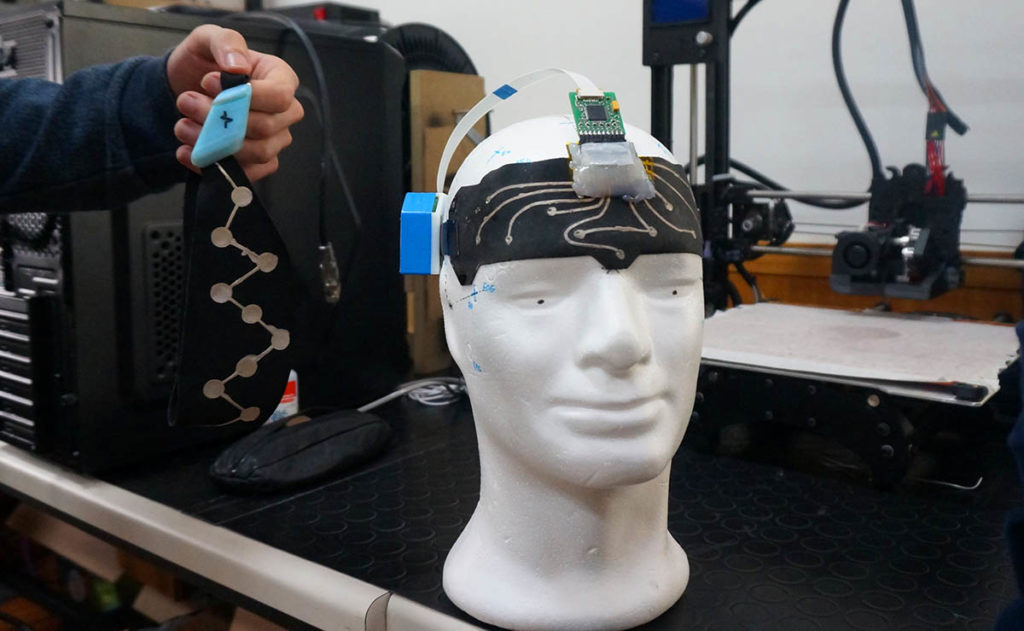The researcher Manuel Reis Carneiro, from the Institute of Systems and Robotics (ISR) of the Faculty of Science and Technology of the University of Coimbra (FCTUC), has developed a wearable, low-cost and reusable electronic device that allows making electroencephalograms in a much more comfortable way and for much longer periods than the technology currently used in the clinic.
Thus, in the future, performing an electroencephalogram, or EEG, a test widely used to assess brain activity, will be much simpler and more convenient for the patient.
This innovative device based on flexible electronics, a technology that allows the creation of elastic (soft) electronic circuits, consists of a textile band where ultra-thin non-rigid electrodes are inserted, produced using a specific ink that facilitates the interface between the electronic device and brain activity , developed at ISR's “Soft and Printed Microelectronics” Laboratory (SPM-UC) within the scope of another research project – Stretchtronics.
Currently, electroencephalography is performed with rigid metallic electrodes placed on the scalp, which become uncomfortable after some time. What's more, current systems are large, use a lot of wires, take time to set up and require a specialized technician, confining patient monitoring to a laboratory or hospital.
The “wearable EEG” developed by the ISR researcher overcomes these limitations and can “be placed on the patient extremely simply and quickly by anyone and, as it is textile and the electrodes are highly flexible, it allows examinations to be carried out over a long period of time. more time, as it does not become uncomfortable, guaranteeing the same quality as the current devices used in medicine», explains Manuel Reis Carneiro.
Initially designed to be applied in emergency services, "where a specialized technician is not always available to carry out the examination, thus enabling any professional to place the device and get to know the patient's condition", the potential application of this wearable device of the next generation is vast, says the researcher.
“By enabling the human-machine interface, for example, a quadriplegic person is able to control a wheelchair through brain activity. On the other hand, as it is a wireless and very low cost device, it can also be used for medical examinations in remote locations (telemedicine), that is, the data can be acquired anywhere in the world and analyzed remotely by a specialized doctor. , in a hospital. It can also be applied in cases where continuous monitoring of the brain's electrical activity is necessary», he highlights.
After the success of the laboratory tests, the researcher and his team intend to move towards clinical validation with a view to placing this “wearable” on the market. «The device is working, it is effective in the acquisition of brain activity, it is simple and cheap (the textile band costs between 1 and 2 euros), and that is why we want the technology to reach the market», concludes Manuel Reis Carneiro.
Funded by the Foundation for Science and Technology (FCT) and by the Carnegie Mellon Portugal Program (CMU Portugal), the project was developed within the scope of the researcher's master's thesis, supervised by Mahmoud Tavakoli, professor and director of the “Soft and” Laboratory Printed Microelectronic” by ISR, and was recently distinguished in the “Fraunhofer Portugal Challenge 2019” ideas competition.
Author: Cristina Pinto – Press Office – University of Coimbra – Science Communication
Science in the Regional Press – Ciência Viva



















Comments